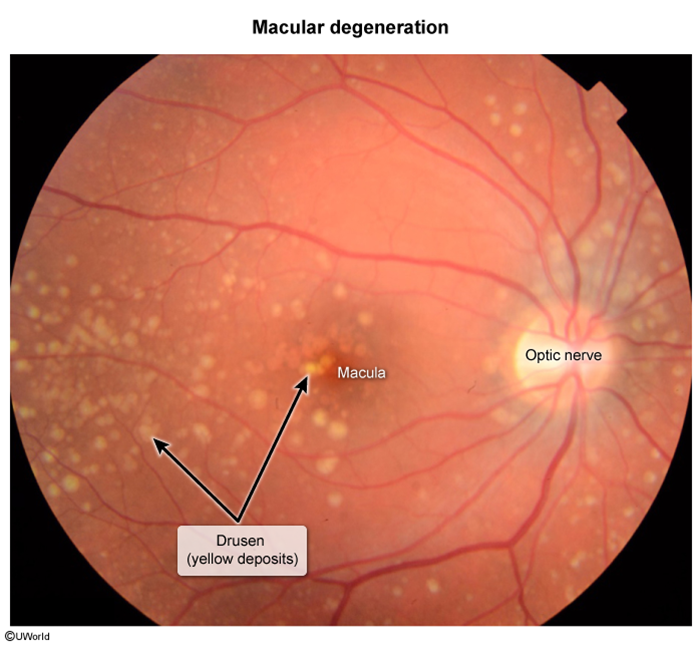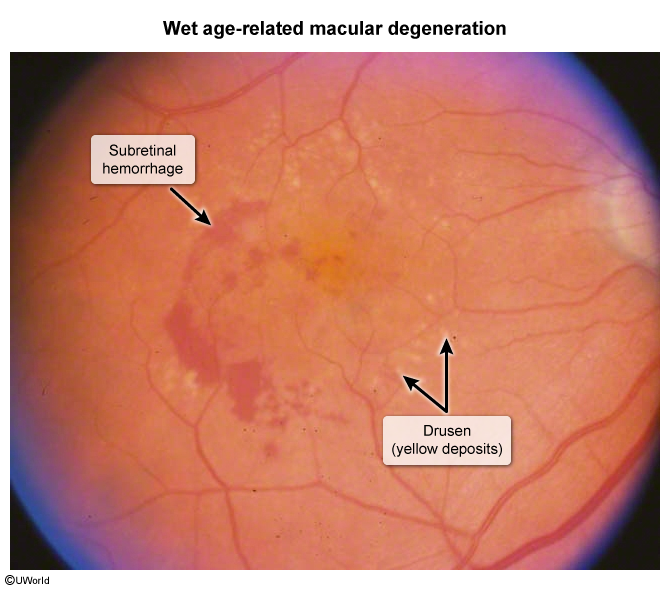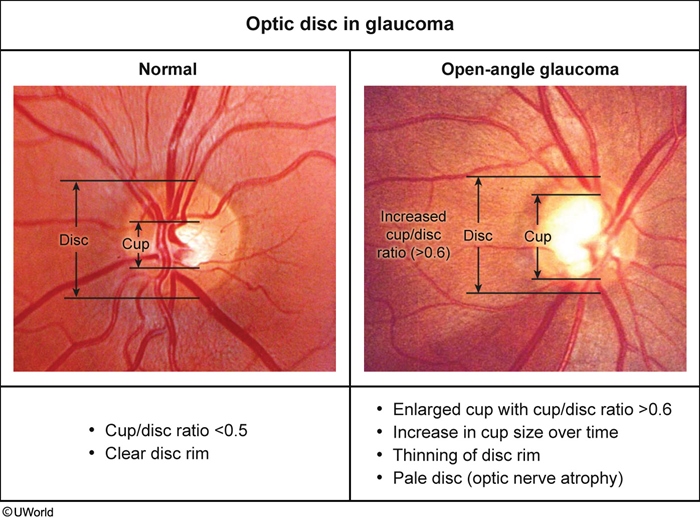Macular Degeneration
Article Sections
Introduction
Age-related macular degeneration (AMD) is a major cause of blindness and visual impairment in older adults (age >50). It involves the progressive loss of central vision due to degenerative changes in the macula, the central part of the retina responsible for high acuity, fine detail, and central vision. AMD is classified into dry (atrophic) and wet (neovascular) subtypes. The dry form typically affects both eyes and has an insidious onset. By contrast, the wet form is associated with a more rapid and aggressive course that requires prompt treatment.
Risk factors
- Age >50
- Smoking (most significant modifiable risk factor)
- Genetic predisposition/family history
- Low dietary intake of antioxidants (eg, fruits, vegetables)
Anatomy
The macula is the portion of the retina responsible for central vision. In the macula, each cone synapses to a single bipolar cell that synapses to a single ganglion cell (in contrast to the peripheral retina, where multiple cones converge onto a single ganglion cell). Because of this arrangement, visual acuity (sharpness, contrast) and metabolic activity are greater in the macula than in any other area of the retina.
Continue Learning with UWorld
Get the full Macular Degeneration article plus rich visuals, real-world cases, and in-depth insights from medical experts, all available through the UWorld Medical Library.
Figures
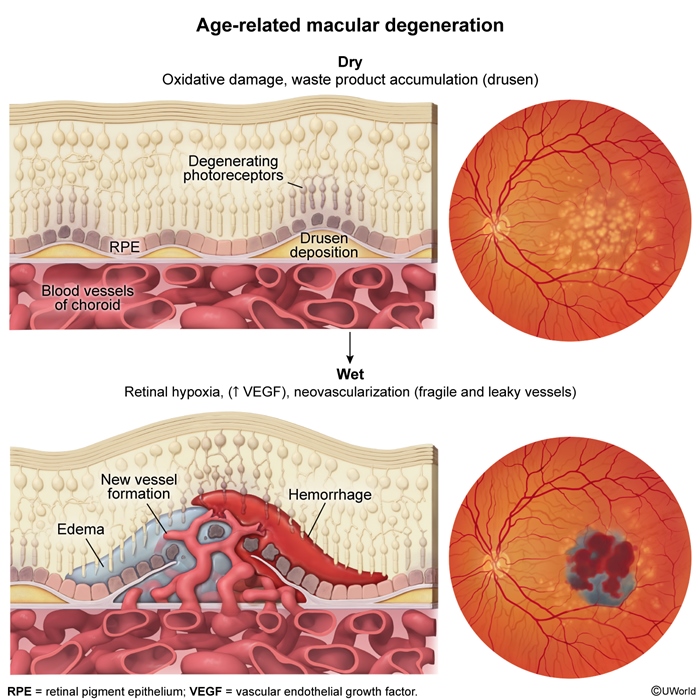
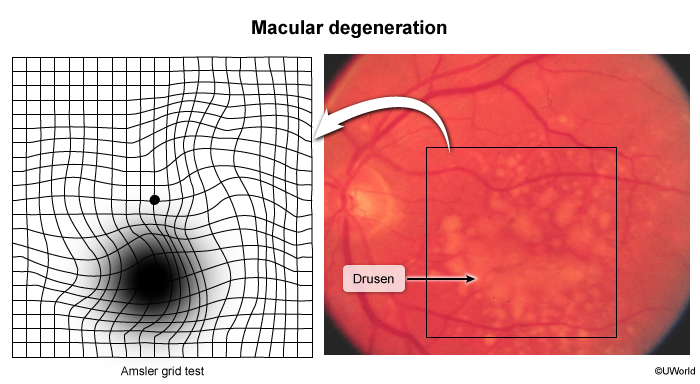
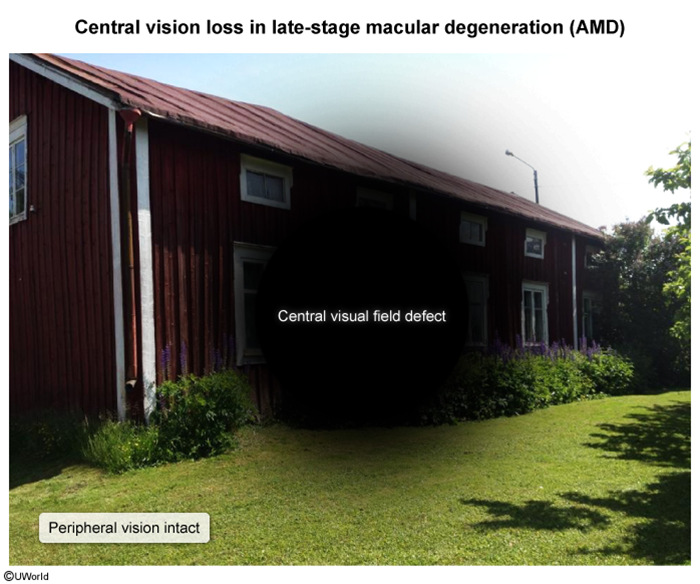
Images
